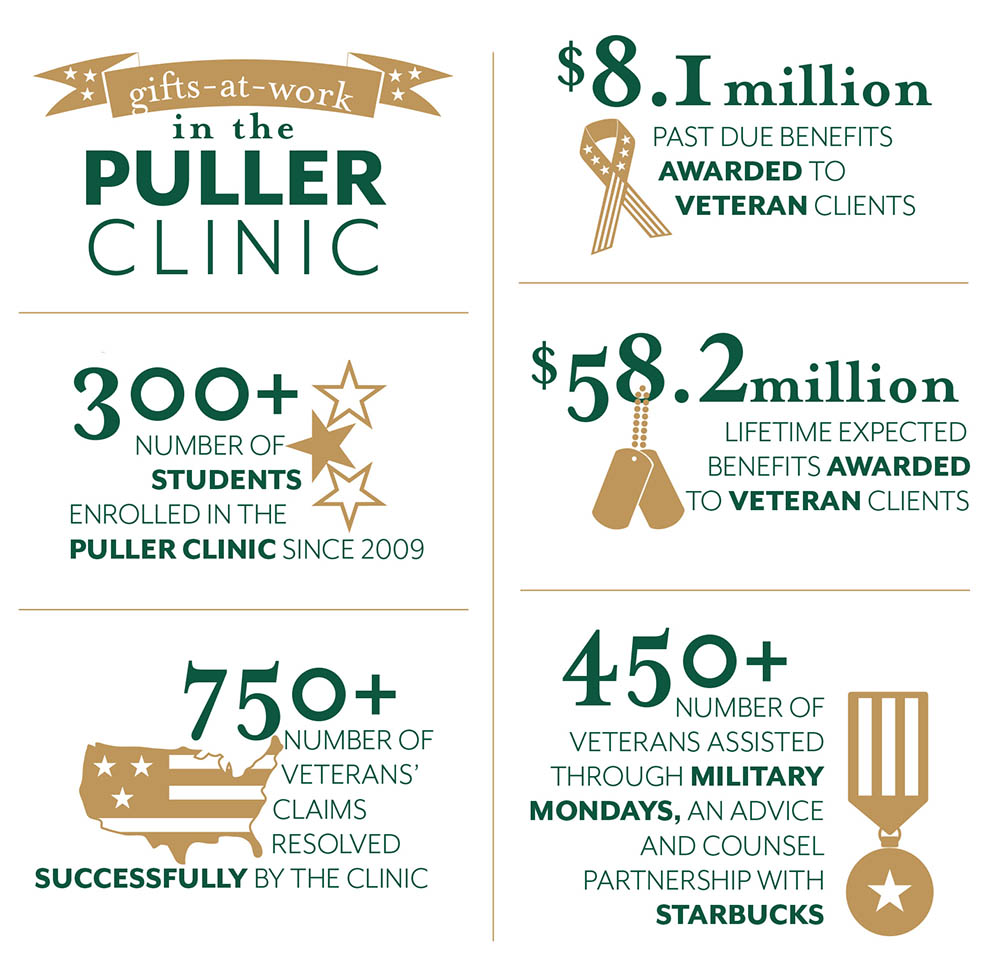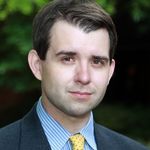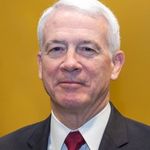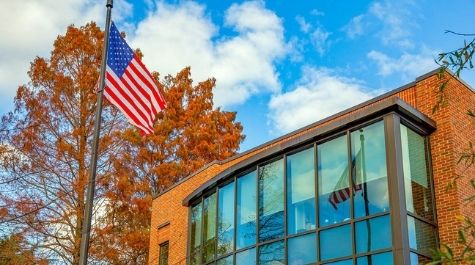W&M Puller Veterans Benefits Clinic: Serving those who served, now and in the future
In January 2009, the Puller Veterans Benefits Clinic accepted its first clients. In the years since, the clinic has achieved great success in its two-fold mission: to provide students with the skills and knowledge they need to be effective attorneys, and to help veterans affected by service-related disabilities receive the benefits they deserve.
 The 2020 spring semester began as usual at the clinic. Its co-directors, Professor Caleb Stone ’15 and Visiting Professor Michael Dick ’06, presented an all-day training session on clinic procedures and VA Disability Compensation Law. Students familiarized themselves with their clients’ case histories. As spring break approached, students met at least weekly with Stone and Dick, receiving guidance as they considered potential actions for their clients.
The 2020 spring semester began as usual at the clinic. Its co-directors, Professor Caleb Stone ’15 and Visiting Professor Michael Dick ’06, presented an all-day training session on clinic procedures and VA Disability Compensation Law. Students familiarized themselves with their clients’ case histories. As spring break approached, students met at least weekly with Stone and Dick, receiving guidance as they considered potential actions for their clients.
Then came COVID-19. Classroom and clinical education went fully online in the space of about two weeks.
Dick counts the clinic fortunate that the shift happened on the eve of spring break.
“At that point, students had had the foundational classes,” he says, a major factor in the clinic’s ability to provide uninterrupted service to its veteran clients. “I think faculty and staff were very agile in their ability to shift quickly and seamlessly.”
The effective transition was also “a tribute to the students’ mindset, their flexibility, and their willingness to adapt.”
Several students told Stone that “the work they continued to do on behalf of their clients gave them a sense of purpose that they may not have had otherwise.”
 A professor of the practice of law, Stone has been a clinic mainstay since his days as a William & Mary law student. After graduation, he joined the clinic as an Equal Justice Works AmeriCorps Legal Fellow. He co-created the clinic’s Military & Veterans Health, Policy & Advocacy online certificate program, which is designed for anyone who wants to become an advocate for veterans seeking disability compensation benefits through the Department of Veterans Affairs. A featured speaker on veterans benefits at several continuing education events, Stone serves as a committee chair for the National Law School Veterans Clinic Consortium. He has also taught Legal Research & Writing classes for J.D. and LL.M. students.
A professor of the practice of law, Stone has been a clinic mainstay since his days as a William & Mary law student. After graduation, he joined the clinic as an Equal Justice Works AmeriCorps Legal Fellow. He co-created the clinic’s Military & Veterans Health, Policy & Advocacy online certificate program, which is designed for anyone who wants to become an advocate for veterans seeking disability compensation benefits through the Department of Veterans Affairs. A featured speaker on veterans benefits at several continuing education events, Stone serves as a committee chair for the National Law School Veterans Clinic Consortium. He has also taught Legal Research & Writing classes for J.D. and LL.M. students.
 Dick, a visiting professor in the clinic, served more than 26 years on active duty in the Marine Corps, largely as an infantry officer, and retired at the rank of colonel before enrolling in law school at William & Mary. After earning his J.D., he spent a dozen years in the U.S. Department of Justice’s National Security and Criminal Divisions. In 2016, Virginia Gov. Terry McAuliffe appointed him to the Virginia Board of Veteran Affairs, which he chairs. He is a past president of the William & Mary Law School Association.
Dick, a visiting professor in the clinic, served more than 26 years on active duty in the Marine Corps, largely as an infantry officer, and retired at the rank of colonel before enrolling in law school at William & Mary. After earning his J.D., he spent a dozen years in the U.S. Department of Justice’s National Security and Criminal Divisions. In 2016, Virginia Gov. Terry McAuliffe appointed him to the Virginia Board of Veteran Affairs, which he chairs. He is a past president of the William & Mary Law School Association.
The Puller Clinic is only one facet of the university’s support for veterans. William & Mary’s Office of Student Veteran Engagement serves as a hub of information and support for military and veteran students on campus. Student groups include the Student Veterans of William & Mary, the Mason School of Business Military Association and the Law School’s Military and Veterans Law Society. The Association of 1775 serves as a network for William & Mary alumni in U.S. government service, including the military, whether active or retired.
In July 2020, the university announced a $10 million gift from an anonymous alumna to establish a cutting-edge Veteran-to-Executive Transition program (W&M VET).
Over the years, the Puller Clinic has received gifts and grants from individuals, companies, and organizations and has benefited from the support of the Classes of 1974 and 1984.
Recently, Malcolm P. Taylor ’65 and Lynn A. Dievendorf ’66 made leadership gifts and pledges to establish the Lewis B. Puller, Jr., Clinic Research Professorship Endowment, which will ensure the clinic has two faculty members in the future. Stone and Dick say the development means more students can have a clinic experience and that the clinic can help more veterans. Taylor and Dievendorf studied at William & Mary as undergraduates and serve on the Clinic’s Advisory Board. Taylor is a retired U.S. Navy captain; Dievendorf, a retired U.S. Army colonel.
Stone and Dick say students bolster their skills and self-confidence through their work for clients. The real-world experience, Dick says, “puts them head and shoulders above their peers in the job market.”
Students "have had to deal with difficult issues and real clients," Stone says, "and I think it gives them that backbone to say, 'I can handle the real world.'"
Learn more about the Law School’s nine clinics and clinical rogram at law.wm.edu/clinicalprogram.
 Skip to main content
Skip to main content

